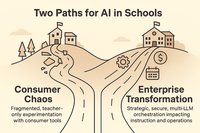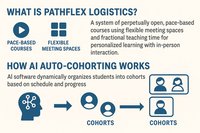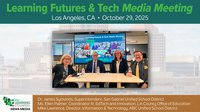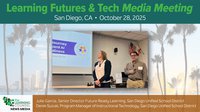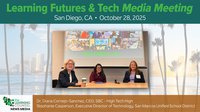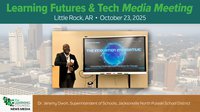Why do so many students leave school hating math, vowing never to take it again? Why do so many adults tell me they struggled with math and were so glad when “it was over?” Why do so many parents tell their children they can’t help them in math because they “can’t do math?” Why do we math educators accept and teach math curricula that puts so many students through hell? Why do so many terrific math teachers leave the profession?
Bradley Cooper sings a great song in the remake of the movie, “A Star is Born.” It is called “Maybe it’s time to let the old ways die.” Einstein apparently said the definition of insanity is to continue doing the same thing over and over again and expect a different result. It’s time to question why math teachers are forced to teach inappropriate curricula, forced to assess inadequately and as a result, forced to leave so many great students behind.
It’s time to let the old ways die. It’s time to allow curriculum writers to end the practice of asking “what are the universities demanding us to teach?” and instead ask the question “how can we create math courses that take students from where ever they are mathematically and take them to a better place?” We should not only ask this of math education, but of all STEM education. We must think of the challenges we all face. We must open our arms to nontraditional learners who are capable of facing these challenges.
I believe K-12 math education must be redesigned to reach all students with STEM ways of thinking and problem-solving. The earth is demanding it. All students leaving grade 12 must be able to think mathematically and scientifically. All students should be taught using technology and taught how to use technology. Sometimes I think there should be a math students Bill of Rights that protects math students from the predatory practices of theoretical prerequisites whose only real role is to discriminate against non-traditional learners. And in enabling that discrimination, we lose children who could become great teachers, nurses, doctors, and entrepreneurs.
Imagine a math classroom where every student studies math in a context about which they can embrace and feel passionate. Imagine a classroom where one student shows what he or she knows using pure math, another by creating a theatre set, another by trying to solve a problem like how to reduce carbon dioxide in our oceans and atmosphere. Imagine a place where students are valued for who they are, not what they are. I get goose bumps even thinking about it.
Imagine being a teacher in that classroom. Here is how I imagine it. Technology handles most of the teacher’s statistical duties. One morning, the teacher pulls the class together to discuss the latest STEM items in the news. Students discuss the implications and ask questions. The students head to their work space. The teacher visits individual students and listens to them describe their progress and what they have learned. The teacher asks a probing question about how a student solved a problem specific to their assignment or project. The student excitably describes her thinking and shows what she learned. The teacher records the comments, the learning objectives met, and this data becomes a part of the student’s mark. Another student admits to the teacher that he is falling behind his own timeline. He quietly describes an intolerable home life. He ia disheartened, ashamed and feel hopeless. The teacher listens and wonders how to help. With the support of their staff and the community, the teacher works to make change in that student’s life. That folks, is the profession of teaching at its most precious, meaningful and rewarding level.
In another classroom, students in a STEM-related gifted program work on their performance expectations. They have access to the same intuitive software and facilities to support their style of learning. They are happy and productive. They envision a future riddled with learning and challenge. Working with them is a teacher who is thrilled to get to work every single day.
Can you think of a better job if you love kids and you love mathematics? Imagine the talent we could attract to math education in such a classroom and in such a world. Imagine reading about your students in the future. Imagine their successes. Imagine the students who struggled with math concepts saying that math class was one of their favorites. Imagine being the math teacher who students love.
Now there are many problems and huge costs associated with the creation and production of the technology necessary to facilitate the classrooms of the future. However, I not only believe the investment is worth it humanly speaking, I see it as a necessary cog in the development of STEM education as the best vehicle to address our truly big expenses. Factor in the cost of unbridled climate change, unsafe air and oceans filled with chemicals and plastic and you have a cost benefit ratio that demands our attention. I’m not speaking only of our home turf. We have global issues that will only be solved by a major change. That change will come from the children in our schools right now.
I argue that we have major problems to solve to make this planet a better place. These problems will require a worldwide investment in children’s education, specifically STEM studies and of those, especially mathematics. I believe a massive problem requires a massive investment into the children we see every day. Frankly we need nothing less from our future citizens. The earth needs the very best from us. We cannot afford to leave non traditional students behind. Yes, we need infrastructure funded. But that infrastructure must include fixing the foundation of our society, it’s future citizens.
Maybe it’s time to let the old ways die.
About the Author
Rick Wunderlich is a Math and Science textbook author, Math and Science curriculum writer and retired from the best career ever… a teacher.


